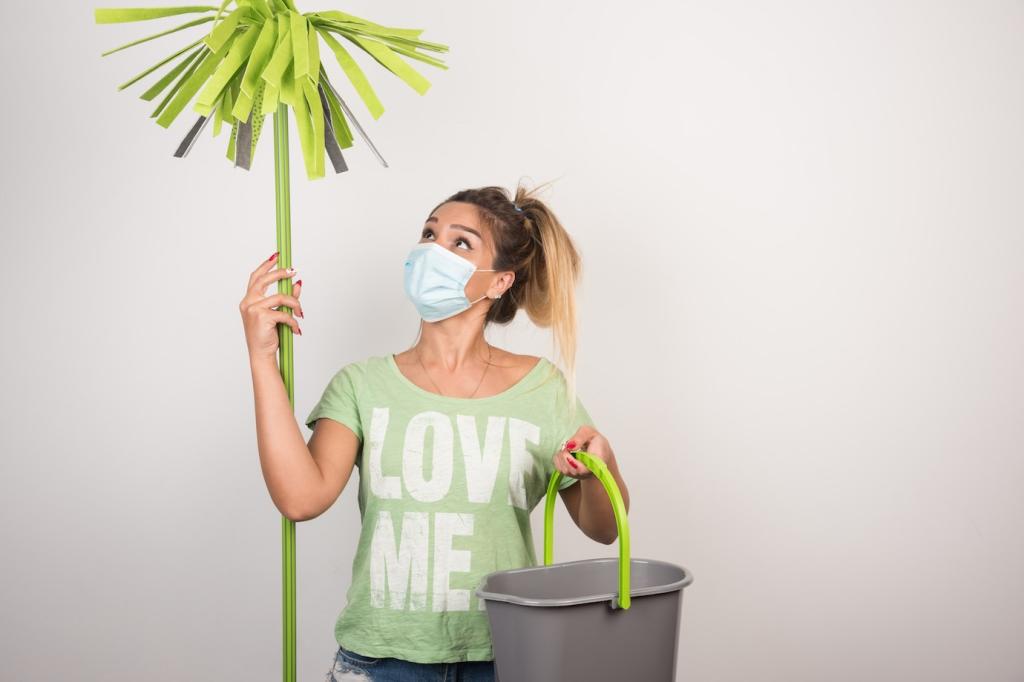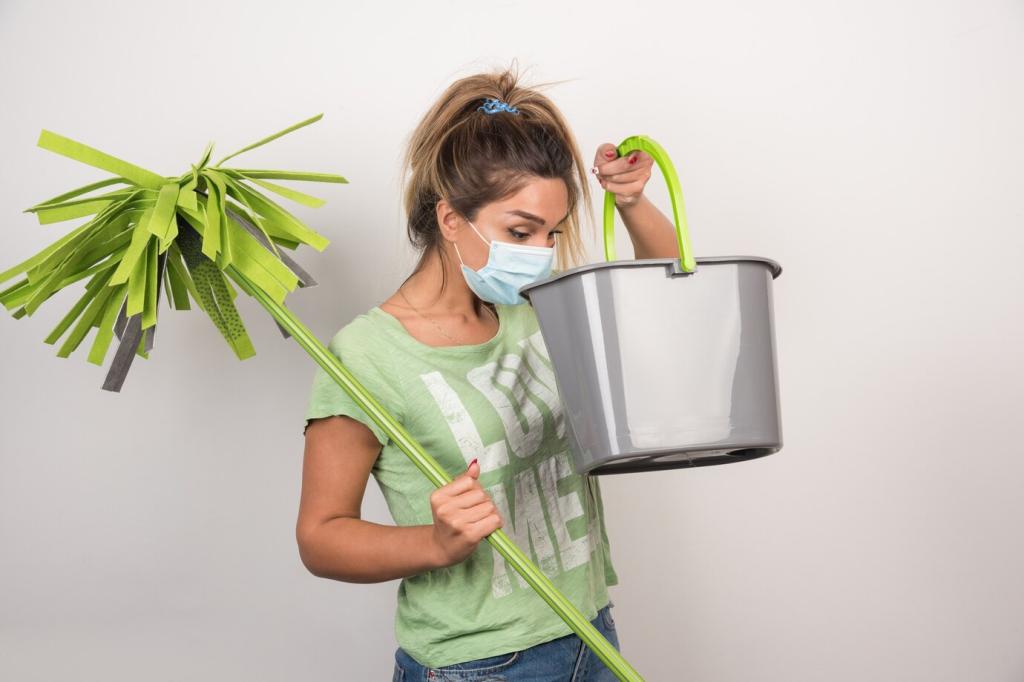Upholstery & Fabric Sofas: Fresh Air Clean
Sprinkle a thin, even layer of baking soda across cushions and armrests. Let it sit for at least thirty minutes, longer for heavy odors. Vacuum thoroughly with an upholstery attachment. If weather allows, open windows to circulate fresh air for a clean, outdoor-dried feel.
Upholstery & Fabric Sofas: Fresh Air Clean
Blot, never rub, to lift liquid upward. Follow with club soda on a cloth for gentle fizzing action. For stickier spots, a teaspoon of castile soap in a cup of warm water helps. Lightly dab, then blot dry. Aim a fan for quicker, mold-safe drying.
Upholstery & Fabric Sofas: Fresh Air Clean
Blend one cup warm water, one teaspoon unscented enzyme laundry detergent, and a few drops of castile soap. Apply sparingly, dab gently, and wait five minutes before blotting. Enzymes break down organic residues, reducing reappearing stains. Make small batches and use promptly for best results.


